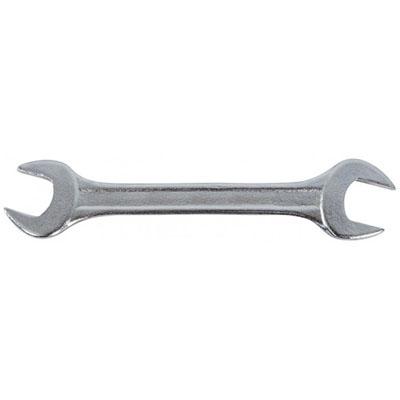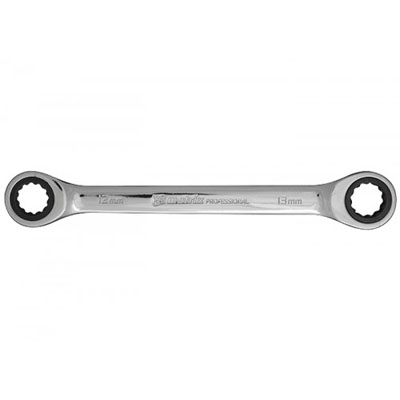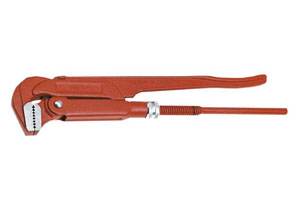 Wrenches are designed to loosen or tighten connections that use bolts and nuts. Bolted connections are very common in our life, they can be found in almost any mechanism, machine, machine tool, etc. The work is not difficult, but sometimes it requires quite a lot of physical effort, especially for rusted elements.
Wrenches are designed to loosen or tighten connections that use bolts and nuts. Bolted connections are very common in our life, they can be found in almost any mechanism, machine, machine tool, etc. The work is not difficult, but sometimes it requires quite a lot of physical effort, especially for rusted elements.
Since there are a fairly large number of types of bolted connections, nuts are tightened with different forces, often quite large, there are also quite a lot of appropriate tools for tightening and unwinding them, and it is about their diversity, differences and features that we want to talk about in this article.
In this article, we tried to collect information about all types of wrenches for unscrewing nuts, including the sizes that can be found on sale.
So what are wrenches?
 open end wrenches
open end wrenches
These keys are the most common and most people have not only seen them more than once, but also used them in certain cases. They are produced in accordance with GOST 2839-80 and are correctly called "double-sided open-end wrenches".
They are called carobs because of their appearance. If you look at the ends of these keys, then the edges resemble horns, hence the similar name. Double-sided wrenches are essentially a two-in-one tool. That is, with one wrench, you can unscrew the nuts and bolts of two sizes.
The size of the nut, bolt head and the same open-end wrench is measured in millimeters. In the process of communication, they usually do not say the word millimeters, leaving only a number, but this does not interfere with understanding each other: for example, “Give me a 13 wrench” and it’s clear that you need a wrench to unscrew a nut or bolt by 13 mm.
Open-end wrenches are designed for unscrewing a specific type of bolts: general machine-building purposes with a hexagonal head or a classic type of nuts with six edges.
Open-end wrenches are available in different sizes and range from 4 mm to 55 mm. There is no point in doing it anymore - there will not be enough strength to manually unscrew such a nut.
If we consider the design of open-end wrenches, then in most of them the axis of the key head is located at an angle of 15 degrees to the axis of the key itself. But there are other tilt options - for working in a limited space (specialized keys).
You can also find one-sided open-end wrenches. They only have a head on one side. These wrenches are designed for work when there is not enough force to screw or unscrew the threaded connection. If you encounter such a problem, then you can put a piece of pipe on the handle of such a key and increase the size of the lever. Typically, these keys are produced in a fairly large size: from 36 to 95 mm. They are mainly used in production or in construction during the installation of metal structures on bolted joints, when it is necessary to tighten the nuts with very great effort.
 Ring spanners
Ring spanners
Ring wrenches are also very common tools for threaded connections. In terms of popularity, they take the second place of honor.
If we consider their design as a whole with respect to the open-ended ones, then in the cap edges lying on the edges of the nut or the bolt head are located in a closed ring at the ends of the key. Thanks to this design, they can be used to apply much more force to the nut or bolt without fear that the key or the unscrewed element will be damaged.
Ring wrenches can be with six faces or with 12 faces. The latter are more reliable and they are less likely to “lick” the edges of a bolt or nut.
Types of spanners
- Single sided wrenches. Like open-ended ones, they have a handle, and the key head is located on one side. They are usually large in size: from 30 to 50 mm and a pipe nozzle can be put on them to increase the leverage and the force applied to the threaded element.
- Double ended wrenches. By analogy with open-end wrenches, their heads are located on both sides, with heads of various sizes.
- Curved ring wrenches. These keys are specialized and designed to work in confined spaces where it is simply impossible to work with other keys.
- Impact spanners. In fact, these are the same one-sided tools, on the handle of which there are special thickenings. These thickenings are hit with a hammer to give the key a short-term great effort. The sizes of these keys are the largest: from 27 to 105 mm.
- With ratchet. Using these wrenches, you can tighten nuts and bolts without moving the wrench along the edges to a convenient position for turning the wrench. Basically, this key is used by motorists, but there are always such keys in the home sets of knowledgeable people.
- Ring wrenches with hinged heads. In fact, this is the head of a key hinged to a metal handle, which allows twisting without rearranging the head relative to the edges of the nut or bolt.
- Set of heads. These are essentially separate end heads that have a recess for a nut on one side, and on the other side a tetrahedral recess into which a handle called a T-shaped knob is inserted. That is, one handle and a large number of heads under which it fits.
 Tubular or socket wrenches
Tubular or socket wrenches
This type of wrench is suitable for work when the nut is located deep in the structure or in the part and it is simply impossible to get close to it with other types of wrenches. They also differ in sufficient variety. You can meet them in the form of a tube to which the knob goes, L-shaped - for unscrewing, for example, hub nuts or powerful rods at the ends of which there are end heads.
You can also find a large number of socket wrenches with a ratchet mechanism on sale, although their cost is several times higher than the classic one.
Tubular wrenches are quite common, and mainly due to the fact that they are much cheaper than end wrenches - it takes less metal to make them, but they are much inferior in strength to the same end wrenches. The tightening force with which you can tighten the nut with a tubular wrench is relatively small and this must be taken into account otherwise you will simply bend and ruin the wrench.
The socket wrench, due to the monolithic handle, is able to withstand a very large force, therefore it is in this form that, for example, wrenches for unscrewing the hub nuts are produced.
 Adjustable wrenches
Adjustable wrenches
If we consider the general design of these keys, then they are most similar to open-end wrenches, with one exception - the distance between the jaws can be changed due to the worm mechanism.
Adjustable wrenches come in a variety of shapes and we want to note the features of the main varieties.
Firstly, these are adjustable wrenches with flat jaws. With their help, it is convenient to unscrew nuts and bolts with edges, that is, a classic look.
The next variety are the so-called gas keys. Usually these are large keys with notched lips. Their main purpose is to work with threaded connections on pipes. After all, the pipes are round and there are no edges on them to catch other types of keys, and the pressing jaws with notches perfectly cope with this task.
Similar to gas wrenches and tick-type adjustable wrenches. The movement (pushing apart) of the sponges in them is carried out not by a worm mechanism, but in a special slot with teeth. That is, you push the jaws to the desired distance, and the teeth allow you to fix this position during work.
The main advantage of adjustable wrenches is that they can be used to unwind ordinary threaded connections on bolts and nuts and versatility - you don’t need a large set of wrenches, just one is enough.